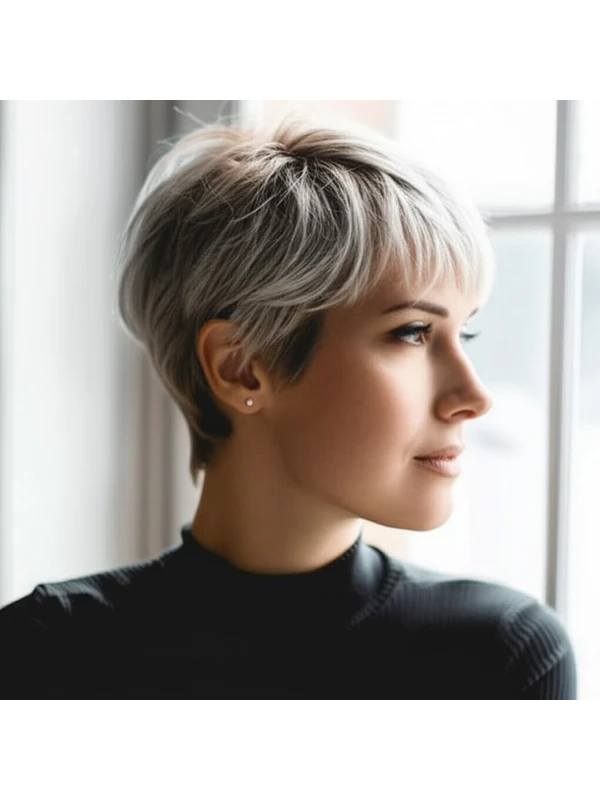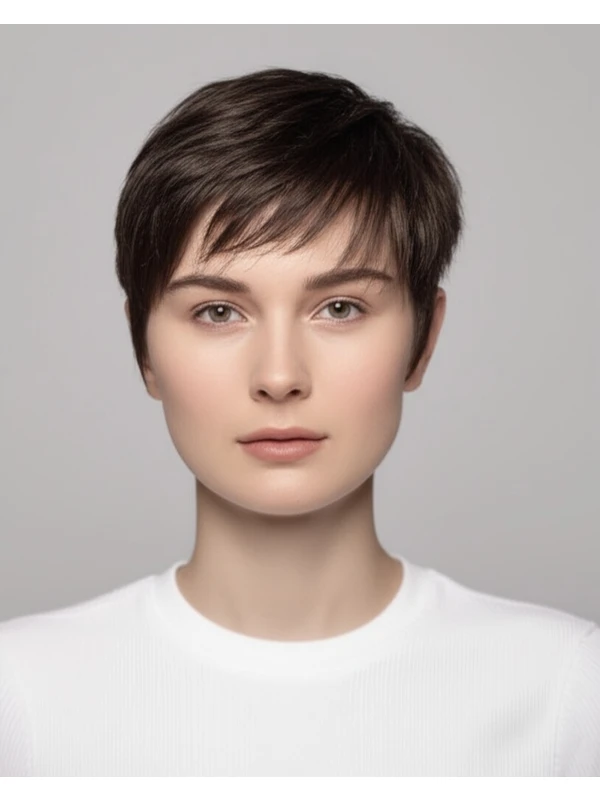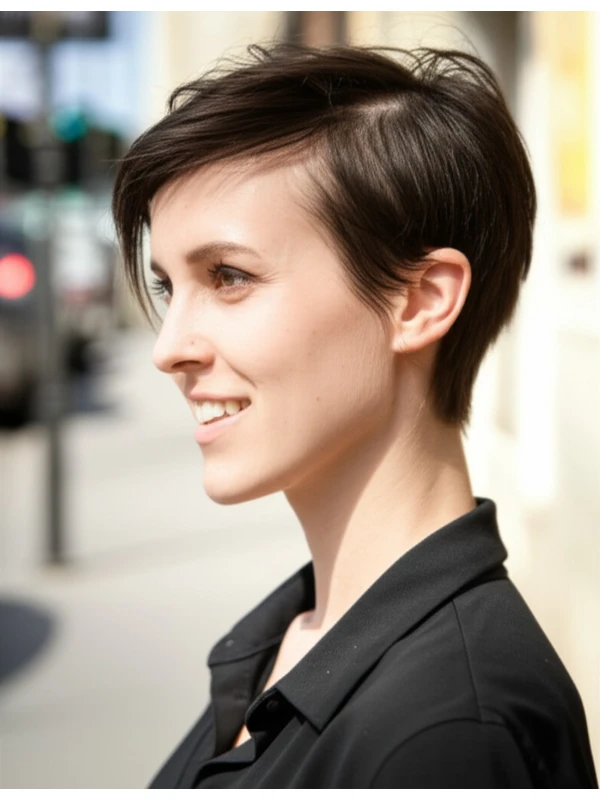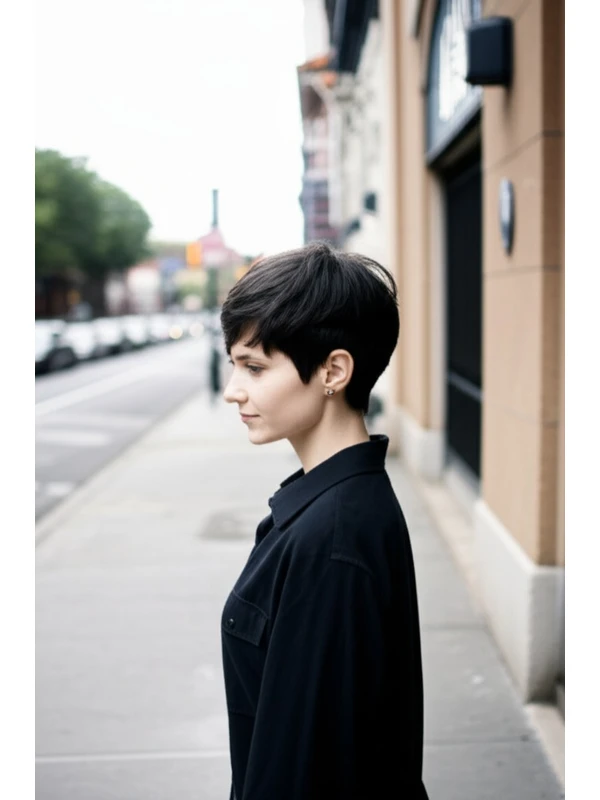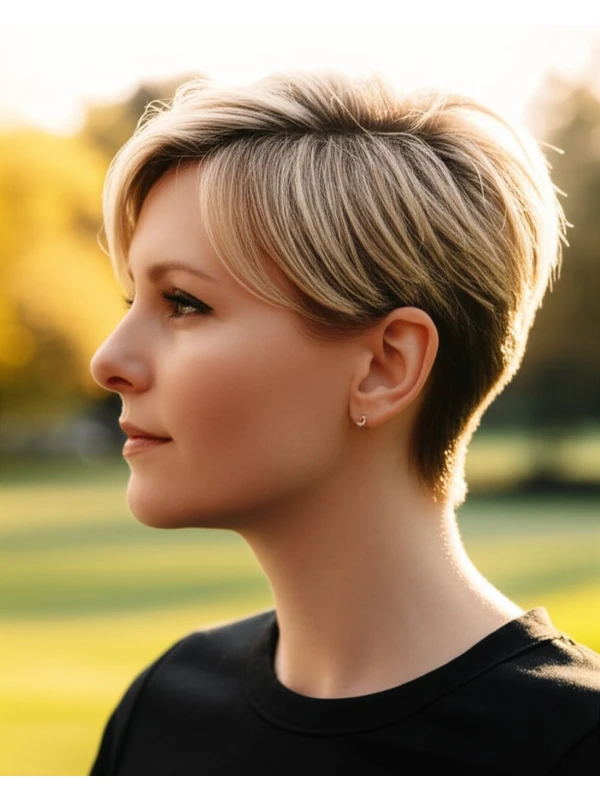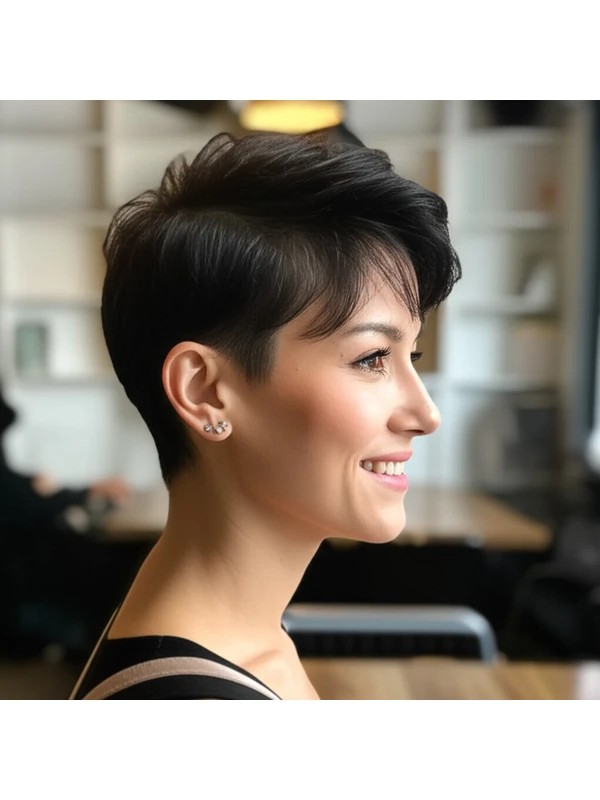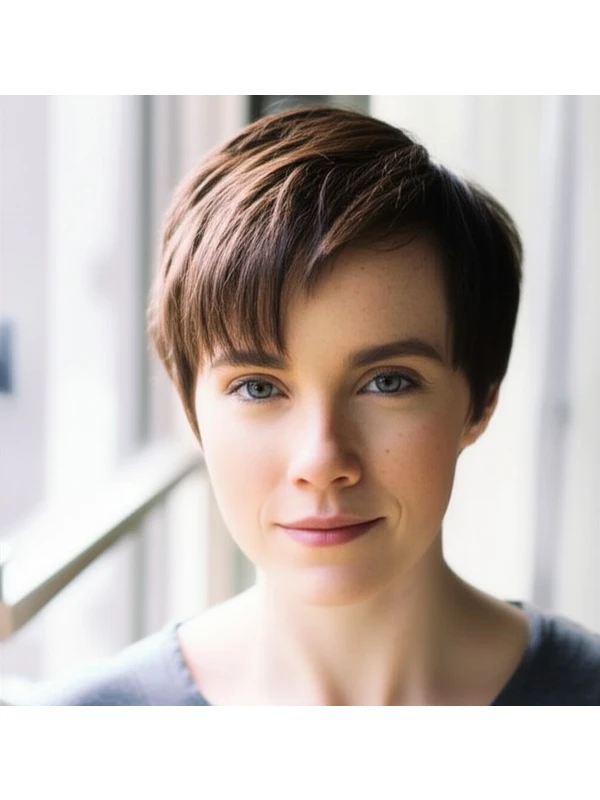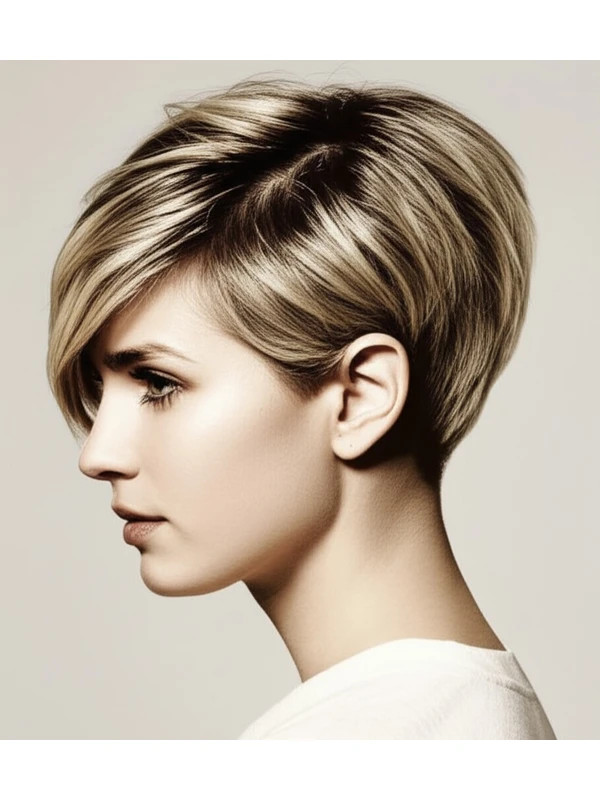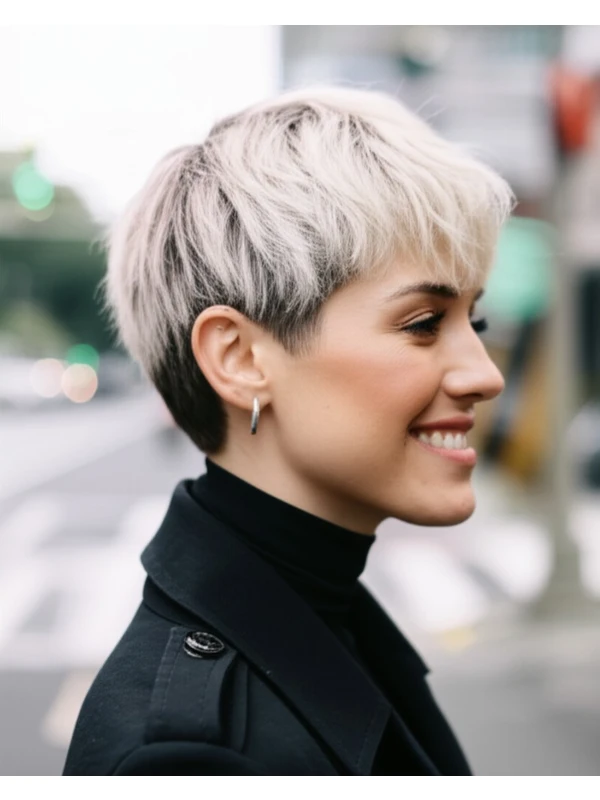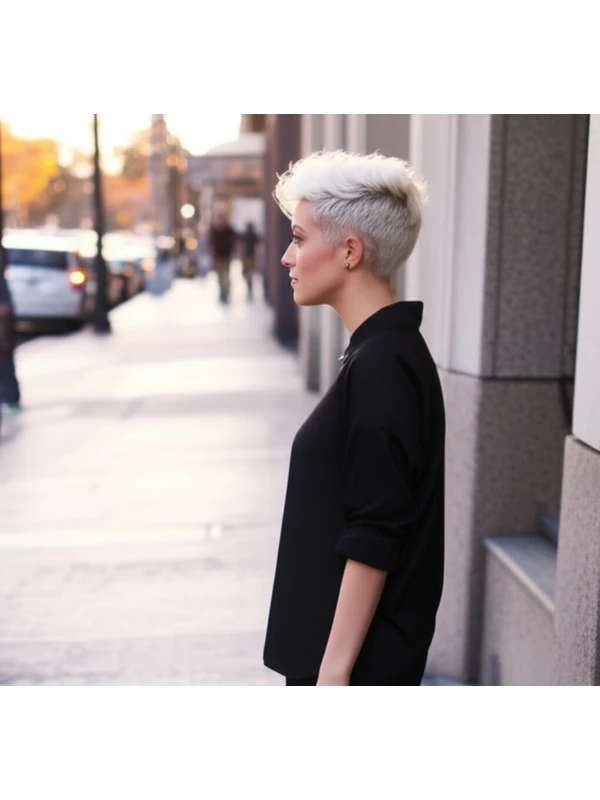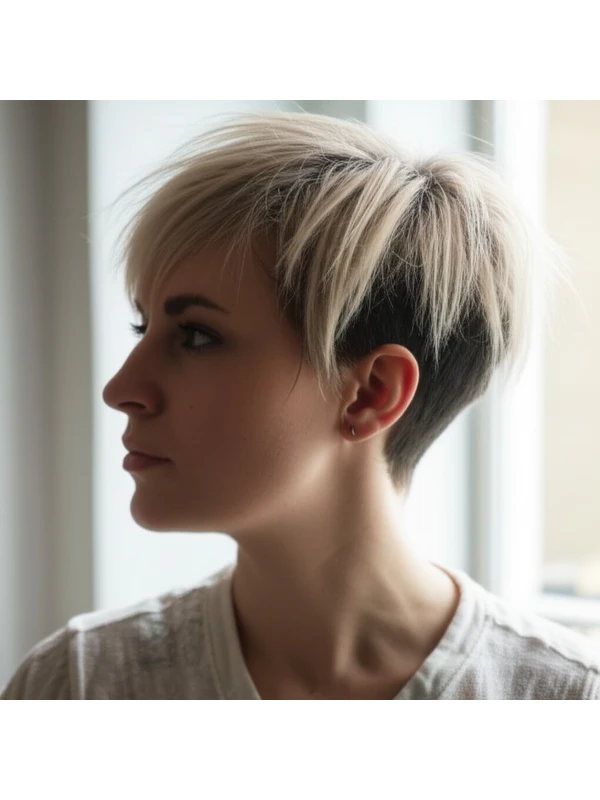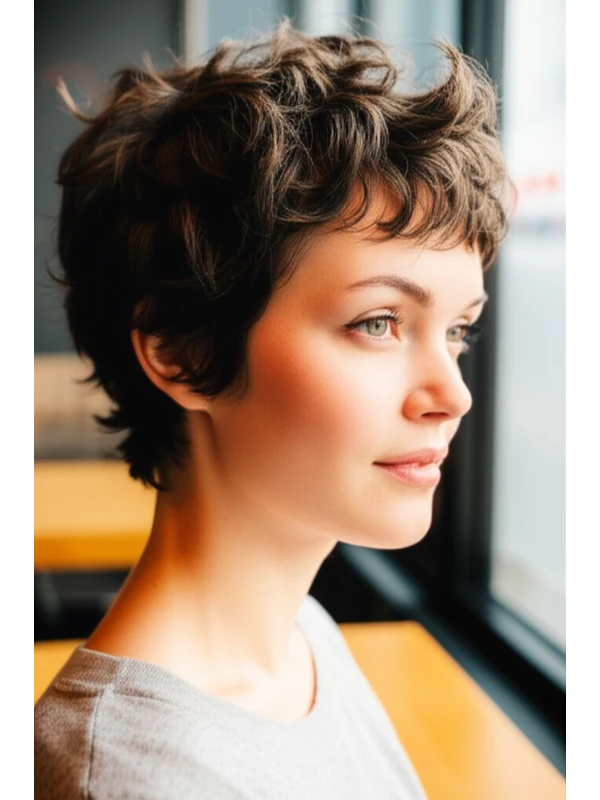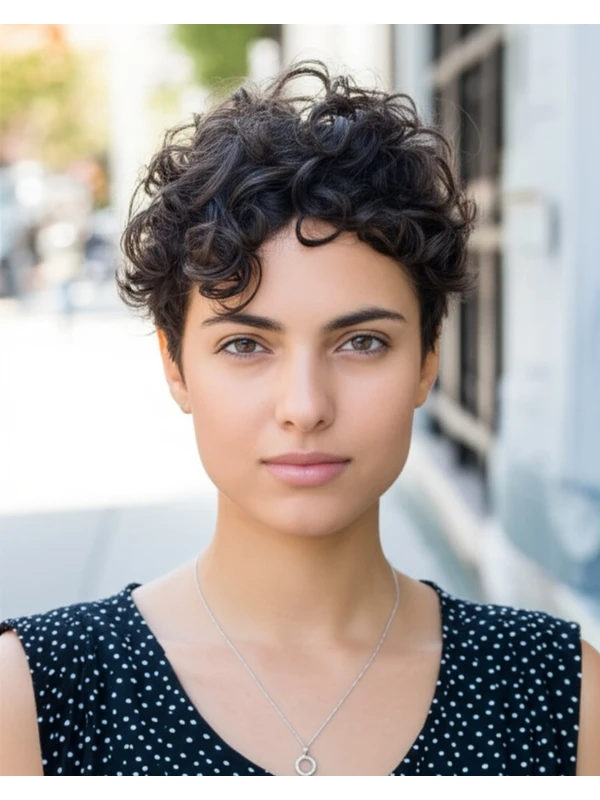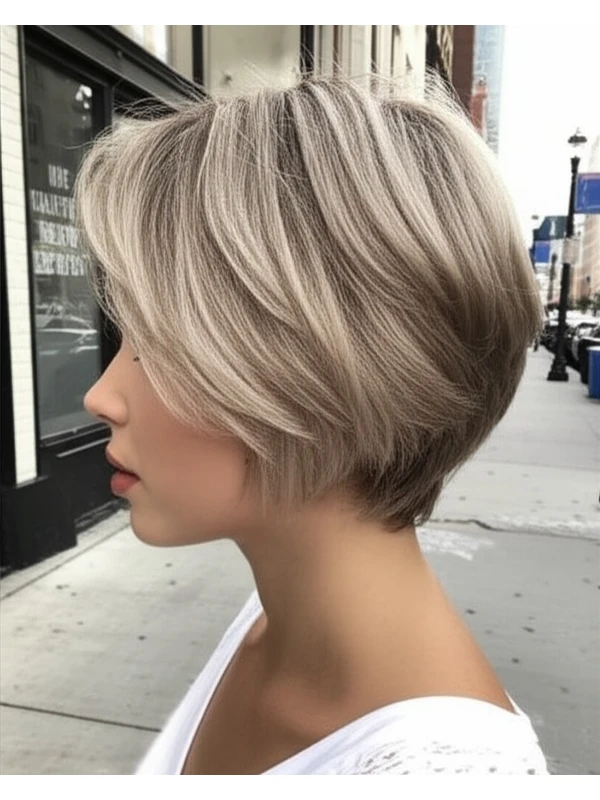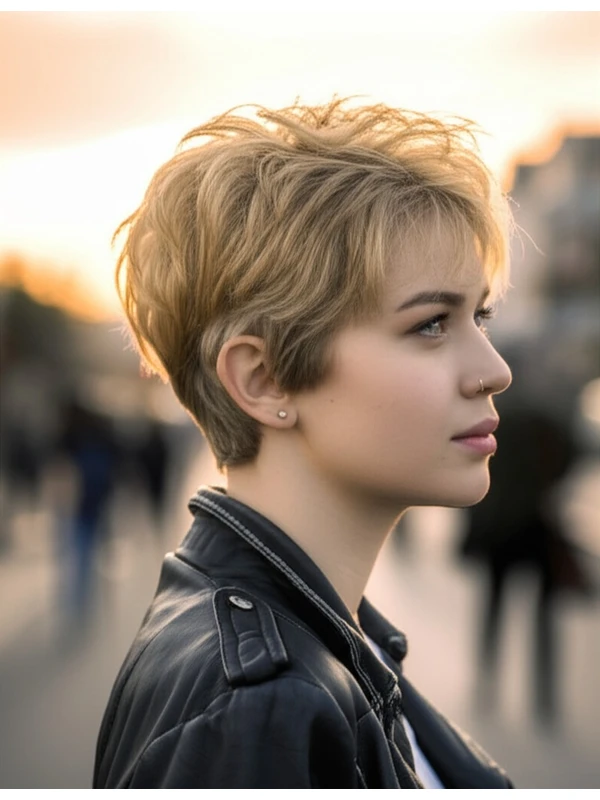#The Sleek Pixie: A Modern Classic
The sleek pixie is a timeless hairstyle that exudes confidence and sophistication. It’s more than just short hair; it's a carefully sculpted statement piece adaptable to many personalities and features. This guide will walk you through everything you need to know about rocking the sleek pixie, from finding your perfect fit to keeping it looking its best.
#1) Background & Definition: What is a Sleek Pixie?
The "pixie" cut generally refers to short hairstyles that are cropped close to the head and often involve layers around the crown for volume. A sleek pixie takes this concept further, emphasizing smoothness, precision, and a polished finish.
Key Features:
- Close-cropped sides & back: The hair is typically shortest at the nape of the neck and along the hairline, creating a clean outline.
- Slightly longer top/crown: This allows for some styling versatility – volume, texture, or a sleek, swept-back look.
- Defined lines: Sharp angles and precise shaping are hallmarks of this style. It's about control and intentionality.
- Minimal layering (or very subtle): Unlike more textured pixies, the focus is on smooth movement rather than choppy layers.
Length Ranges: Typically, the shortest section at the back/sides will be around 1/2 inch to 1 inch long, while the longest part on top can range from 2-4 inches (5–10 cm).
Alternative Names: Short & Chic, Modern Bob (when slightly longer), French Crop (can sometimes overlap but lacks the sleekness)
#2) Face Shape Fit: Finding Your Angle
The right pixie cut can highlight your best features and balance your face shape. Here's a breakdown:
- Oval Faces: Lucky you! Sleek pixies work exceptionally well with oval faces as they complement the balanced proportions. A slightly longer fringe (bangs) can add softness.
- Round Faces: A sleek pixie with height at the crown is your best bet. Avoid styles that are too round or uniform in length, as this emphasizes roundness. Side-swept bangs or a deep side part help create asymmetry and elongate the face.
- Square Faces: Soften those angles! A slightly longer top section and gentle layering can soften a square jawline. Avoid blunt, harsh lines around the cheekbones. Asymmetrical styles work well to break up symmetry.
- Heart-Shaped Faces: The sleek pixie balances a wider forehead with its short sides and back. Chin length or slightly shorter on the sides helps balance a pointed chin. A wispy fringe can soften the upper face.
- Diamond Faces: Similar to heart shapes, diamond faces benefit from styles that broaden the cheekbones and soften angles. Volume at the crown is key. Side-swept bangs are flattering.
- Oblong (Long) Faces: Avoid pixie cuts that add too much height on top, as this will further elongate your face. A fringe (bangs), even a wispy one, can help shorten the appearance of a long face. Keeping the sides slightly longer than typical also helps to widen the overall look.
#3) Body Proportions & Height Guidance: Silhouette Considerations
Your body type and height play a role in how a pixie looks on you.
- Petite: A sleek pixie can be incredibly flattering, but avoid styles that are too short or severe, as they might overwhelm your frame. A little volume at the crown adds balance.
- Average Height: Most variations of the sleek pixie work well for average heights.
- Tall: You can pull off a very short and bold sleek pixie! The contrast is striking.
- Narrow Shoulders: Volume on top creates an illusion of broader shoulders. Avoid styles that are too flat or close to the head, as this will accentuate narrowness.
- Broad Shoulders: A slightly more streamlined style can balance broad shoulders without adding extra width.
- Neck Length: Shorter necks look best with a pixie that has some height at the crown and avoids being too scooped out at the back. Longer necks can handle styles with a lower nape line.
#4) Works Best With Hair Types & Densities: Texture Talk
The sleek pixie requires hair that holds its shape well, but it's surprisingly versatile!
- Straight Hair: Ideal for achieving ultimate sleekness and precision. Fine straight hair may need volumizing products to avoid looking flat.
- Wavy Hair: Can work beautifully with a bit of effort! Requires careful cutting to ensure the waves lay smoothly when styled. Product is key to tame frizz and define shape.
- Curly/Coily Hair: A sleek pixie can be achieved, but it's more challenging and requires an expert stylist familiar with curly hair techniques (DevaCut or similar). Shrinkage needs serious consideration – what looks short in the salon will appear much longer when dry! Embrace a slightly longer length to accommodate shrinkage.
- Fine Hair: Volume is crucial! Layering should be minimal, and root-lifting products are your best friend.
- Medium Hair: The most versatile density for this style – it can achieve both sleekness and some volume easily.
- Thick Hair: Requires skillful layering to prevent the pixie from looking bulky. A stylist experienced with thinning techniques is essential.
#5) Styling Variations: From Casual to Chic
The beauty of a sleek pixie lies in its adaptability.
- Sleek vs Textured: While "sleek" implies smoothness, you can add subtle texture by using texturizing sprays or waxes for a more modern feel – just don’t overdo it!
- Middle vs Side Part: A middle part creates symmetry and balance; a side part adds softness and asymmetry.
- Fringe Variations: Blunt bangs, wispy bangs, side-swept bangs - all can work depending on your face shape.
- Occasion Styling:
- Casual: Air dry with minimal product or quickly smooth with a flat iron.
- Office: A polished, sleek look achieved with a round brush and blow dryer.
- Evening: Add shine serum for extra glamour or use styling wax to create more defined edges.
#6) Maintenance: Keeping it Sharp
- Trim Cadence: Every 4-6 weeks is typical to maintain the shape and prevent overgrowth.
- At-Home Routine: Gentle shampooing, moisturizing conditioner, and a heat protectant are essential.
- Heat vs Air Dry: Air drying can work for some hair types, but a blow dryer with a round brush or flat iron is often needed to achieve the signature sleekness.
- Product Checklist:
- Shampoo & Conditioner (suited to your hair type)
- Leave-in conditioner/detangler (especially important for wavy/curly hair)
- Root Lifter (for fine hair)
- Smoothing Serum or Oil (for sleekness and shine)
- Hairspray (light hold, flexible formula)
- Estimated Daily Styling Time: 15-30 minutes.
#7) Grow-Out Roadmap: The Evolution
- Months 1-2: The pixie looks its most defined and structured. Regular trims are crucial to maintain the shape.
- Months 3-4: Hair starts to lengthen, potentially requiring more styling effort to keep it sleek. Consider a slight adjustment to the cut to accommodate the growth.
- Months 5-6: The pixie transitions towards a longer bob or lob (long bob). You can choose to maintain the shape with shorter layers or let it grow out into something new.
#8) Color Pairings: Enhancing the Style
- Cool Undertones: Ash blonde, platinum, cool browns – these shades enhance the sleekness and create a modern edge.
- Warm Undertones: Honey blonde, caramel brown, copper – add warmth and dimension.
- Low-Commitment Options: Gloss treatments or root shadows can subtly change the tone without a full color commitment.
#9) Season & Occasion Guide: Styling for Every Moment
- Spring/Summer: Lighter colors and minimal product create a fresh, effortless look.
- Fall/Winter: Deeper hues and slightly more structured styling add warmth and sophistication.
- Work: Sleek and polished with a side part.
- Weddings: Elevate the style with hair accessories or a more dramatic side part.
- Parties: Experiment with texture, shine, and playful styling.
#10) Cost & Time: Salon Details
- Salon Time: Typically 45-90 minutes for initial cut. Subsequent trims usually take 30-45 minutes.
- Price Range: Expect to pay a moderate to high price range (relative terms – varies greatly by location and stylist experience).
#11) Pros & Cons: Weighing the Options
Pros: Stylish, modern, easy to wash & dry, flattering on many face shapes, highlights facial features. Cons: Requires regular trims, can be difficult to style if hair texture isn’t cooperative, may not suit those who prefer longer hair.
#12) Salon Consultation Script: Your Questions Answered
Use these prompts when discussing your sleek pixie with your stylist:
- "I'm interested in a sleek pixie cut. Can you assess my face shape and recommend the best variation for me?"
- “How will this style work with my hair texture/density, and what styling products will I need?”
- "Can we discuss how to incorporate bangs if desired? What length and style would be most flattering?"
- "I'm concerned about shrinkage. Can you account for that in the cut (if applicable)?"
- “What’s the best way to maintain this shape between appointments?”
#FAQs
- Can I do this myself? While possible, a professional is highly recommended for achieving the precise lines and angles of a sleek pixie.
- Is it difficult to style? It can be initially, but with practice and the right products, you’ll get the hang of it!
- Will I look too young? Not necessarily! A sleek pixie can be incredibly chic at any age – it's about confidence and personal style.
- What if my hair is damaged? Consult with your stylist to determine if your hair is healthy enough for a short cut.
- Can I add volume without losing the sleekness? Absolutely! Strategic layering around the crown, combined with volumizing products, can create lift and movement while maintaining smoothness.
- How do I prevent frizz? Use smoothing serums or oils, avoid excessive heat styling, and consider a keratin treatment (consult with your stylist first).
